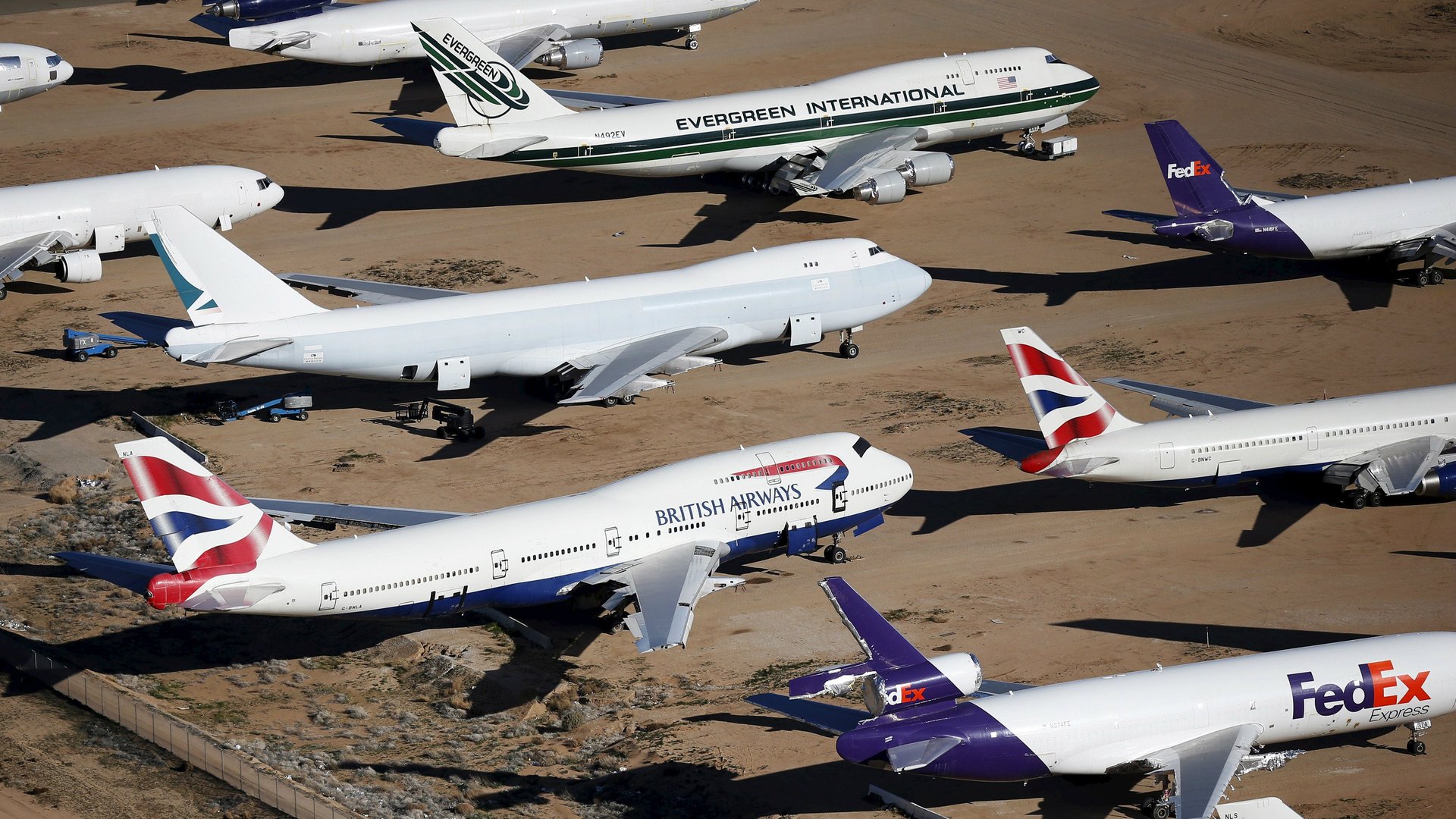Delta bids farewell to the 747, ushering in a leaner era for air travel
The final commercial flight of a Boeing 747-400 operated by a US carrier hit the tarmac in Detroit today. Delta Airlines flight 158 arrived from Seoul just before the aircraft embarks on its farewell tour, with stops in Atlanta, Minneapolis, and Los Angeles later this this week.


The final commercial flight of a Boeing 747-400 operated by a US carrier hit the tarmac in Detroit today. Delta Airlines flight 158 arrived from Seoul just before the aircraft embarks on its farewell tour, with stops in Atlanta, Minneapolis, and Los Angeles later this this week.
While international carriers British Airways, Lufthansa, and Korean Air will still continue to fly the jumbo jets for passenger flights for some time, Delta’s retirement of the 747 signals the end of an era of sorts—one that’s been a long time coming. On the whole, commercial airlines have been phasing out jumbo jets like the 747 in favor of leaner, more efficient aircrafts. United retired its fleet in November, and British Airways announced its plans to retire the last of its three dozen 747s in 2024. In addition, as Quartz reported last month, the rate at which airlines are flying new flights with the A380, known as a “super jumbo jet,” is also at its lowest ever—which means the plane could also one day meet the same fate as the 747.
The reason? Both four engine aircrafts, the 747 and A380 have become an increasingly costly economic choice in an aviation environment where more efficient models such as the two engine Boeing 777 and Airbus A330 are available for long-haul flights. Passenger expectations are also shifting; once it was inconceivable to fly a single aisle aircraft such as the hyper-efficient Boeing 737 Max 8 across the Atlantic. But now low-cost long-haul carriers like Norwegian have proven that passengers will not only tolerate it, but flock to it (if the price is right).
That said, when the 747-100 first debuted with its iconic, double-decker shape in 1969, it was nothing short of an aviation revolution. In many ways, it was a symbol of the beginning of mass air travel, offering anywhere from just over 400 to more than 600 seats, depending on the cabin configuration. This seat density paired with the 747s long flying range made far-flung destinations both attainable and affordable.
In a beautiful ode to the aircraft written by pilot and author Mark Vanhoenacker in the New York Times in October, he explained how:
For pilots, crew members and passengers who love the 747, it’s easy to forget that the airliner was first of all a business proposition, one that aimed to harness economies of scale and a raft of new technologies to cut the seat-per-mile cost of air travel by about 30 percent. Yet on a planet that previously only the richest could cross at will, the 747’s most lasting impact may have been on everyday notions of distance and difference. Having inaugurated the “age of mass intercontinental travel,” wrote the scholar Vaclav Smil, the 747 “became a powerful symbol of global civilization.”
While the 747 will continue to be used as a cargo plane in the US—as well as being the aircraft of choice for that most important passenger: the President of the United States—its overall days as a commercial aircraft are likely numbered. Get on that distinctive front upper deck while you still can.
Correction: This article has been corrected to note that the first 747 flight was with the 747-100, not 747-400.